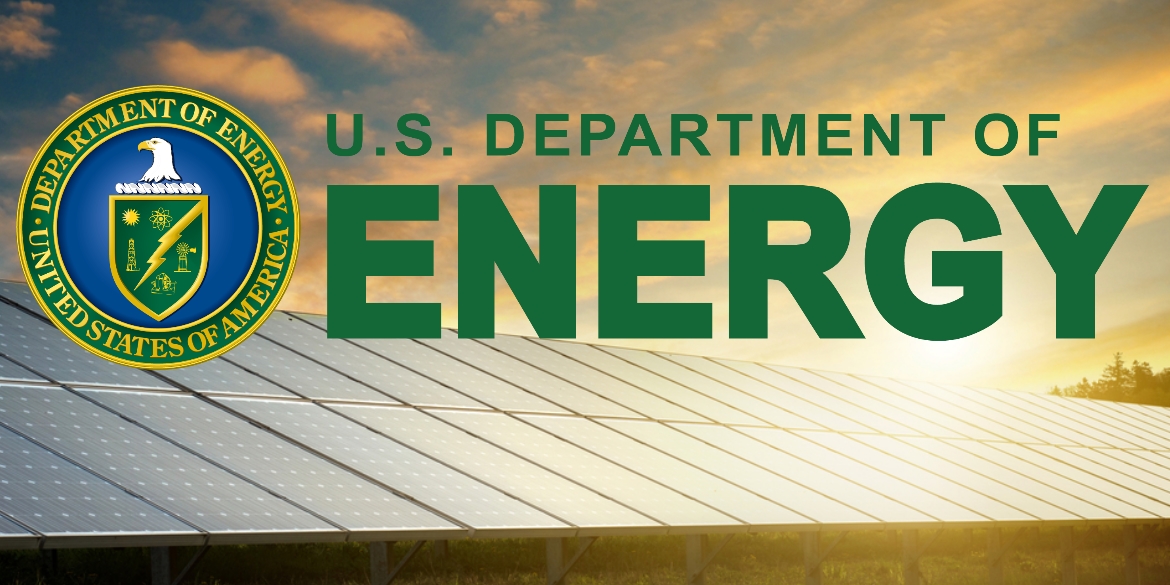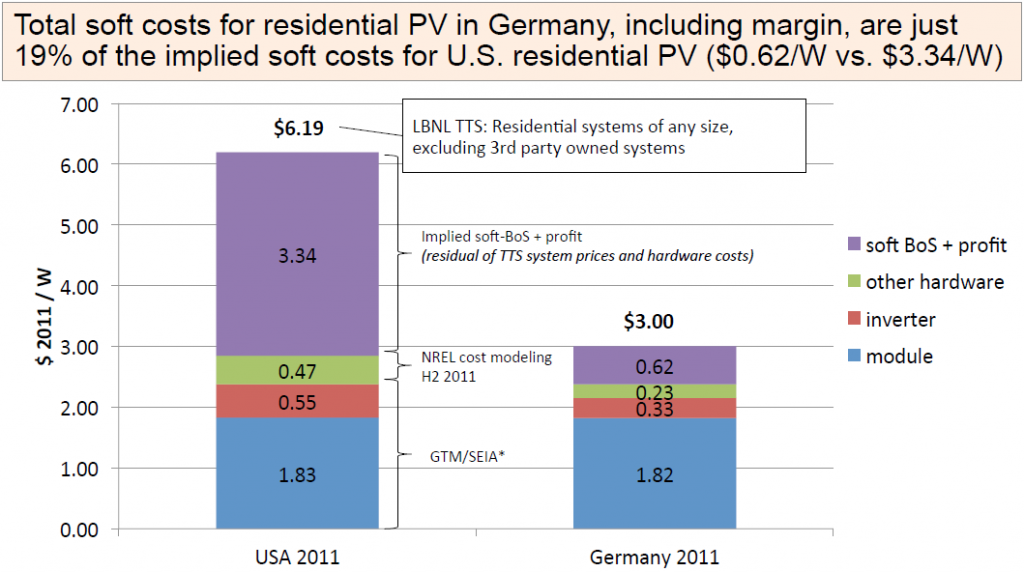Clean Power Research recently attended a U.S. Department of Energy workshop focused on solar soft cost reduction. We came away impressed by the DOE SunShot team’s clear focus on the right problem.
While the cost of modules was once the dominant component of photovoltaic (PV) system costs, that trend has reversed as component prices have fallen. Today, soft costs, including permitting, interconnection, customer acquisition and installation labor, now drive half or more of the total cost of installing a PV system.
It doesn’t have to be that way. In Germany, soft costs are dramatically less, as shown in the graph below [Source: http://emp.lbl.gov/sites/all/files/german-us-pv-price-ppt.pdf].
We were also pleased to learn that the DOE SunShot team is funding very careful analysis. One example is the report entitled “Benchmarking Non-Hardware Balance of System (Soft) Costs for U.S. Photovoltaic Systems Using a Data-Driven Analysis from PV Installer Survey Results,” which is authored by a team from the National Renewable Energy Laboratory and Lawrence Berkeley National Laboratory. This report provides excellent benchmark data for soft costs, and helps both the SunShot program and the industry understand where to focus their efforts in reducing soft costs.
Finally, the DOE is carefully targeting incubator funding to projects with the potential for real-world impact. The last round of funding included development of the National Solar Permitting Database.
The DOE workshop also included presentations by a variety of organizations and companies in the industry. One such organization was the Massachusetts Clean Energy Center who presented some great ideas about how they drove down the cost of customer acquisition through the Solarize Mass program. Clean Power Research was asked to present our work measuring the Value of Solar™ and how different solar revenue mechanisms might influence soft costs.
We are confident the DOE SunShot team’s laser focus will help decrease soft costs over the next several years as rapidly as we have seen module costs decline, making solar an integral part of the U.S. energy mix.

